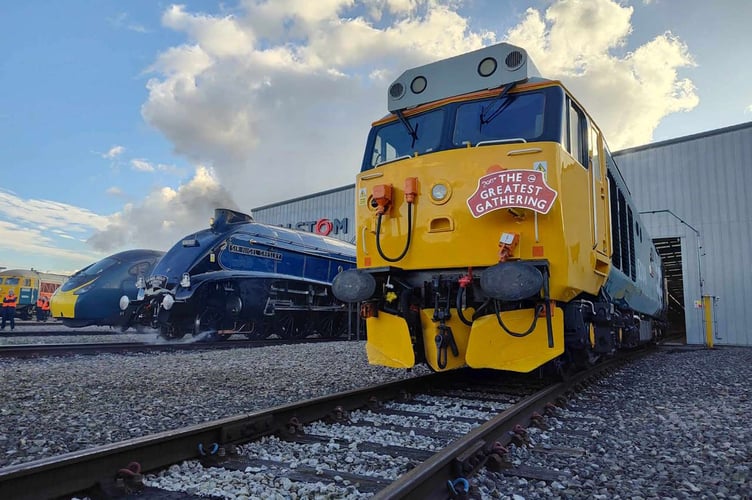Every walk through historic Brookwood Cemetery – the largest in the world when it opened in 1854 – reveals something remarkable. Now, a new reflective garden in the cemetery has just been unveiled by South Western Railway (SWR), which says it is a place where visitors can pause and reflect, and where lost railway colleagues and friends will be remembered.
Created on a disused patch of land between the station and the cemetery, the garden features planters constructed from repurposed railway sleepers and a section of railway track moved from beside Brookwood station. The garden also serves as a memorial to the London Necropolis Railway (LNR), arguably Britain’s most unusual rail line.
After London’s graveyards were at capacity, the LNR’s special trains transported bodies accompanied by mourning relatives on a one-way 23 mile journey from a specially constructed terminus at Waterloo to their final resting place at the cemetery. It operated from 1854 until 1941.
The reflective garden is the latest SWR contribution to Railway 200, a national celebration of the 200th anniversary of the birth of the modern railway and will serve as its flagship “legacy” project for generations to come.
Paula Aldridge, SWR’s Community Rail Manager and driving force behind the garden project, said: “I’m very proud that we have unveiled the first reflective garden on the SWR network as one of our special Railway 200 legacy projects. A partnership of SWR contractors, Network Rail and Brookwood Cemetery have transformed this once barren space into a place of reflection and remembrance.”

Many events have taken place this year as part of Railway 200, which marks 200 years since what is generally considered to be the birth of the modern railway. On September 27, 1825, the world’s first railway to use steam locomotives opened to passengers travelling between Shildon, a small mining town in County Durham, via Darlington to Stockton on the River Tees. The train was hauled by Locomotion No.1, built by the pioneering railway engineers of father and son, George and Robert Stephenson, at their manufacturing firm Robert Stephenson and Company.
But it wasn’t the first “railway”: there is evidence of ancient channels cut in stone to guide horse-drawn wagons from quarries. Wooden wagonways started in the 1560s, followed by metal tracks. In 1808, the engineer Richard Trevithick ran a steam engine on a circular track in an unsuccessful attempt to excite investors.
It was the steam-hauled passenger rail journey on the Stockton and Darlington Railway in 1825 that awakened engineers and entrepreneurs to the wider possibilities of rail transport for passengers and freight. By the mid-19th Century railways had been built throughout Britain with trains hauled by steam locomotives, which then spread throughout the world.
The highlight of events celebrating the anniversary was The Greatest Gathering, a three-day festival from August 1-3 this year. Hosted by the train manufacturer ALSTOM at its Derby factory, it was the world’s largest-ever gathering of historic and modern trains and rail-related exhibits.
Visitors could see historic locomotives including Locomotion No.1 and the high-speed steam giants that followed them, plus diesel workhorses that replaced steam during the latter part of the 20th century, as well as the latest electric trains.
Railways were a crucial part in shaping our lifestyles and landscapes, so let’s all raise a glass to celebrate their 200th anniversary!





Comments
This article has no comments yet. Be the first to leave a comment.